Influence of Fatigue Damage on Criticality Cell Ultimate Load Capacity of Steel–Concrete Composite Section
Abstract
1. Introduction
2. Experiment
2.1. Specimen Parameters
2.2. Arrangement of Monitoring Points
3. Results
3.1. Test Specimen Phenomenon and Failure Mode
3.2. Axial Load–Displacement Curves
3.3. Lateral Stiffness of the Cell
3.4. Grid Model Force Transmission Mechanism
3.5. Finite Element Analysis of the Cell Model
3.5.1. Finite Element Model
3.5.2. Finite Element Model Validation
3.5.3. Load Transfer Ratio of Grid Cells
4. Prediction Model for Ultimate Load Capacity and Optimization Design
4.1. The Composition of the Ultimate Load Capacity of the Cell
4.1.1. Concrete Section Ultimate Load Capacity
4.1.2. Ultimate Load Capacity of Steel Beam Stiffeners
- Sectional strength calculation
- 2.
- Stability calculation
4.1.3. Ultimate Load Capacity of Shear Connection
- PBL Shear Connection
- The bonding performance between concrete and each part is good;
- The shear connection mainly bears the shear force and is subject to shear failure.
- 2.
- Shear studs
4.2. The Influence of Fatigue Damage on Ultimate Load Capacity
4.3. Prediction of Ultimate Load Capacity
- Ultimate Load Capacity Na of the Concrete Beam Section
- 2.
- Determination of the Ultimate Load Capacity of the Shear Connection
- 3.
- Determination of the Ultimate Load Capacity of the Steel Beam Section with Stiffeners
4.4. Model Validation Evaluation
4.5. Regarding the Optimization Design
5. Conclusions
- The study conducted an ultimate load test on the fatigue-damaged specimens TP1 and TP2, which revealed that the lattice chamber still had a relatively high load capacity even under fatigue damage, with a failure mode of biased pressure. It was inferred that the strength of each part of the steel–concrete joint section under failure decreased in the following order: steel–concrete joint section, steel structure section, and concrete section.
- The results of the analysis showed that the relative slip amounts of the two specimens were small, indicating good synergy between the steel plate and concrete of the specimens, and the force transmission of the shear connection was reliable. The comparison of the lateral displacement of TP1 and TP2 showed that fatigue damage had some influence on the lateral stiffness of the lattice chamber. The study also summarized the force transmission mechanism of the lattice chamber of the steel–concrete joint section.
- Finite element analysis calculations were performed on the lattice chamber of the steel–concrete joint section, and the results were compared with the experimental results. The failure mode of the model was found to be consistent with that of the experiment, and the force transmission ratios of each component were analyzed.
- By considering the force transmission ratio of each component, the study established a prediction model for the ultimate load capacity of the local lattice chamber of the steel–concrete joint section, which incorporated the degree of structural fatigue damage. Comparison of the experimental results with the predicted values showed good agreement, providing ideas and references for related practical engineering designs.
- The study also carried out an optimization design of the number of shear connection elements in the local lattice chamber. The comparison of the optimized model with the original model showed that both had similar force transmission ratios and performance, indicating that the optimized model was reliable and applicable and could provide references for practical engineering designs.
Author Contributions
Funding
Data Availability Statement
Acknowledgments
Conflicts of Interest
References
- He, S.; Mosallam, A.S.; Fang, Z.; Liu, L. Structural evaluation of steel–concrete joint with UHPC grout in single cable–plane hybrid cable-stayed bridges. J. Bridge Eng. 2019, 24, 04019022. [Google Scholar] [CrossRef]
- Kim, S.H.; Lee, C.G.; Kim, S.J.; Won, J.H. Experimental study on joint of spliced steel–PSC hybrid girder, part II: Full-scale test of spliced hybrid I-girder. Eng. Struct. 2011, 33, 2668–2682. [Google Scholar] [CrossRef]
- Zhang, D.L.; Bao, Y.W.; Gao, J.H.; Xiao, L.; Li, X.Z. Research on Load Transfer Mechanism of Steel-Concrete Joint Section of Hybrid Beam Cable-Stayed Bridge. In Advanced Materials Research; Trans Tech Publications, Ltd.: Stafa-Zurich, Switzerland, 2013. [Google Scholar]
- He, J.; Liu, Y.; Pei, B. Experimental study of the steel-concrete connection in hybrid cable-stayed bridges. J. Perform. Constr. Facil. 2014, 28, 559–570. [Google Scholar] [CrossRef]
- Liu, R.; Liu, Y. Analysis of auxiliary ribs in steel–concrete joint of hybrid girder. J. Constr. Steel Res. 2015, 112, 363–372. [Google Scholar] [CrossRef]
- Zhou, Y.; Pu, Q.H.; Shi, Z.; Gou, H.Y.; Yang, S.L. Experimental Study on Load Transfer and Fatigue Performance of Steel Concrete Composite Segment of Railway Hybrid Beam Cable-Stayed Bridge. J. Civ. Eng. 2015, 48, 77–83. [Google Scholar]
- Cheng, X.; Nie, X.; Fan, J. Structural performance and strength prediction of steel-to-concrete box girder deck transition zone of hybrid steel-concrete cable-stayed bridges. J. Bridge Eng. 2016, 21, 04016083. [Google Scholar] [CrossRef]
- He, S.; Fang, Z.; Mosallam, A.S. Push-out tests for perfobond strip connectors with UHPC grout in the joints of steel-concrete hybrid bridge girders. Eng. Struct. 2017, 135, 177–190. [Google Scholar] [CrossRef]
- Zhang, Q.; Jia, D.; Bao, Y.; Cheng, Z.; Bu, Y.; Li, Q. Analytical study on internal force transfer of perfobond rib shear connector group using a nonlinear spring model. J. Bridge Eng. 2017, 22, 04017081. [Google Scholar] [CrossRef]
- Zhang, Q.; Pei, S.; Cheng, Z.; Bao, Y.; Li, Q. Theoretical and experimental studies of the internal force transfer mechanism of perfobond rib shear connector group. J. Bridge Eng. 2017, 22, 04016112. [Google Scholar] [CrossRef]
- Zhang, Q.; Jia, D.; Bao, Y.; Cheng, Z.; Xiao, L.; Bu, Y. Internal force transfer effect-based fatigue damage evaluation for PBL shear connector groups. J. Constr. Steel Res. 2018, 148, 469–478. [Google Scholar] [CrossRef]
- Zhang, Q.; Jia, D.; Bao, Y.; Dong, S.; Cheng, Z.; Bu, Y. Flexural behavior of steel–concrete composite beams considering interlayer slip. J. Struct. Eng. 2019, 145, 04019084. [Google Scholar] [CrossRef]
- Liu, Y.; Zhang, Q.; Bao, Y.; Bu, Y. Static and fatigue push-out tests of short headed shear studs embedded in Engineered Cementitious Composites (ECC). Eng. Struct. 2019, 182, 29–38. [Google Scholar] [CrossRef]
- Liu, Y.; Zhang, Q.; Meng, W.; Bao, Y.; Bu, Y. Transverse fatigue behaviour of steel-UHPC composite deck with large-size U-ribs. Eng. Struct. 2019, 180, 388–399. [Google Scholar] [CrossRef]
- Pu, Q.; Yang, S.; Shi, Z.; Hong, Y.; Zhou, Y. Fatigue performance of an innovative steel–concrete joint in long-span railway hybrid box girder cable-stayed bridges. J. Bridge Eng. 2021, 26, 04020129. [Google Scholar] [CrossRef]
- Volke, E. The current pressure in the case of the Nordbrucke Mannheim-Ludwigshafen (Kurt-Schumacher bridge). Ger. Teil 1973, 1, 97–104. [Google Scholar]
- Virlogeux, M. The Normandie Bridge, France: A new record for cable-stayed bridges. Struct. Eng. Int. 1994, 4, 208–213. [Google Scholar] [CrossRef]
- Virlogeux, M. Recent evolution of cable-stayed bridges. Eng. Struct. 1999, 21, 737–755. [Google Scholar] [CrossRef]
- Ohlsson, S. Modal testing of the Tjorn Bridge. In Proceedings of the 4th International Modal Analysis Conference, Los Angeles, CA, USA, 3–6 February 1986. [Google Scholar]
- Yabuno, M.; Fujiwara, T.; Sumi, K.; Nose, T.; Suzuki, M. Design of Tatara bridge. IHI Eng. Rev. 2003, 36, 40–56. [Google Scholar]
- He, S.; Fang, Z.; Fang, Y.; Liu, M.; Liu, L.; Mosallam, A.S. Experimental study on perfobond strip connector in steel–concrete joints of hybrid bridges. J. Constr. Steel Res. 2016, 118, 169–179. [Google Scholar] [CrossRef]
- Tian, J.; Zheng, G.; Tang, G.; Chen, J. Experimental Study on Static Load and Fatigue of Steel Concrete Joint Model of Chongqing Shibanpo Yangtze River Bridge Double Track Bridge. Highw. Traffic Technol. 2007, 2, 113–117. [Google Scholar]
- Ru, K. Fatigue Performance Research and Experimental Scheme Design of the Combined Section of the Beam and Side Wall of a High-Speed Railway Spatial Rigid Frame Bridge. Ph.D. Thesis, Southwest Jiaotong University, Chengdu, China, 2011. [Google Scholar]
- Xiao, L.; Li, X.; Satellite; Su, X. Experimental Study on Fatigue Performance of Steel Concrete Composite Segment of Space Rigid Frame Structure. Eng. Mech. 2013, 30, 83–89. [Google Scholar]
- Li, X.; Xiao, L.; Su, X.; Wei, X. Mechanical properties of steel concrete composite segments of spatial rigid frame structures. J. Southwest Jiaotong Univ. 2012, 47, 907–914. [Google Scholar]
- Yang, S. Study on Fatigue Behavior of Steel Concrete Composite Section of Hybrid Beam Bridge. Ph.D. Thesis, Southwest Jiaotong University, Chengdu, China, 2012. [Google Scholar]
- Zhan, Y.; Zhao, R.; Mao, X.; Dong, B. Model test of steel concrete composite section of Dongping Bridge. Bridge Constr. 2011, 4, 20–24. [Google Scholar]
- Gu, Y.-W.; Nie, X.; Liu, Y.-F.; Duan, S.-K.; Fan, J.-S. Experimental and numerical study of steel-to-concrete joint section in hybrid cable-stayed bridges. J. Constr. Steel Res. 2021, 187, 106982. [Google Scholar] [CrossRef]
- GB50010-2010; Code for Design of Concrete Structures GB50010-2010 (2015 Edition). China Academy of Building Research: Beijing, China, 18 August 2010.
- GB 50017-2017; Steel Structure Design Standard: [S]. Domestic—National Standard. State Administration for Market Regulation CN-GB: Beijing, China, 12 December 2017.
- Zhang, Q.; Li, Q.; Tang, L. A three-dimensional nonlinear simulation analysis method for shear connectors. J. Southwest Jiaotong Univ. 2005, 40, 595–599. [Google Scholar]
- Hosaka, T.; MItsugi, K.; Hiragi, H.; Ushijima, H. Study on shear strength and design method of perfobond strip. Jpn. J. Struct. Eng. 2002, 48, 1265–1272. [Google Scholar]
- Nishiumi, K.; Okimoto, M. Shear strength of perfobond rib shear connector under the confinement. Doboku Gakkai Ronbunshu 1999, 1999, 193–203. [Google Scholar] [CrossRef]
- Zong, Z.; Che, H. Experimental study on static load and fatigue of shear connectors. J. Fuzhou Univ. Nat. Sci. Ed. 1999, 27, 61–66. [Google Scholar]
- Liu, Y.; Zhou, W.; Jiang, J. Experimental study on shear resistance of perforated plate connectors. Bridge Constr. 2006, 6, 1–4. [Google Scholar]
- Roberts, W.S.; Heywood, R.J. Development and testing of a new shear connector for steel concrete composite bridges. In Proceedings of the Fourth International Bridge Engineering Conference, San Francisco, CA, USA, 28–30 August 1995. [Google Scholar]
- Hu, J.; Hou, W.; Ye, M. Research on the influencing factors and calculation formulas for the load capacity of PBL shear keys. J. Railw. Sci. Eng. 2007, 4, 12–18. [Google Scholar]
- GB50017-2003; Code for Design of Steel Structures GB. Ministry of Construction of the People’s Republic of China: Beijing, China, 25 April 2003.
- Hobbacher, A. The IIW fatigue design recommendations-newly revised and expanded. Weld. World-Lond. 2007, 51, 243. [Google Scholar]

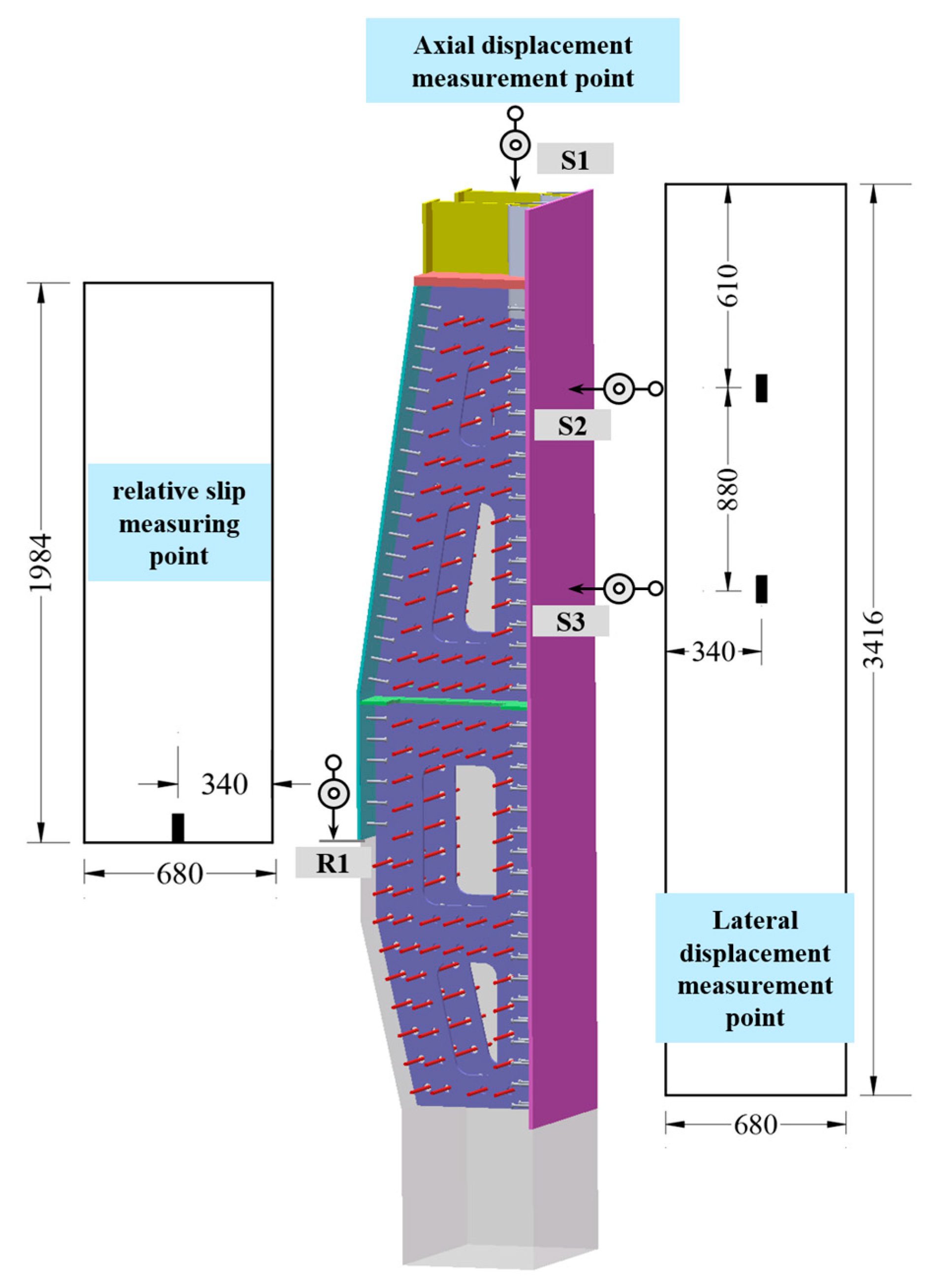
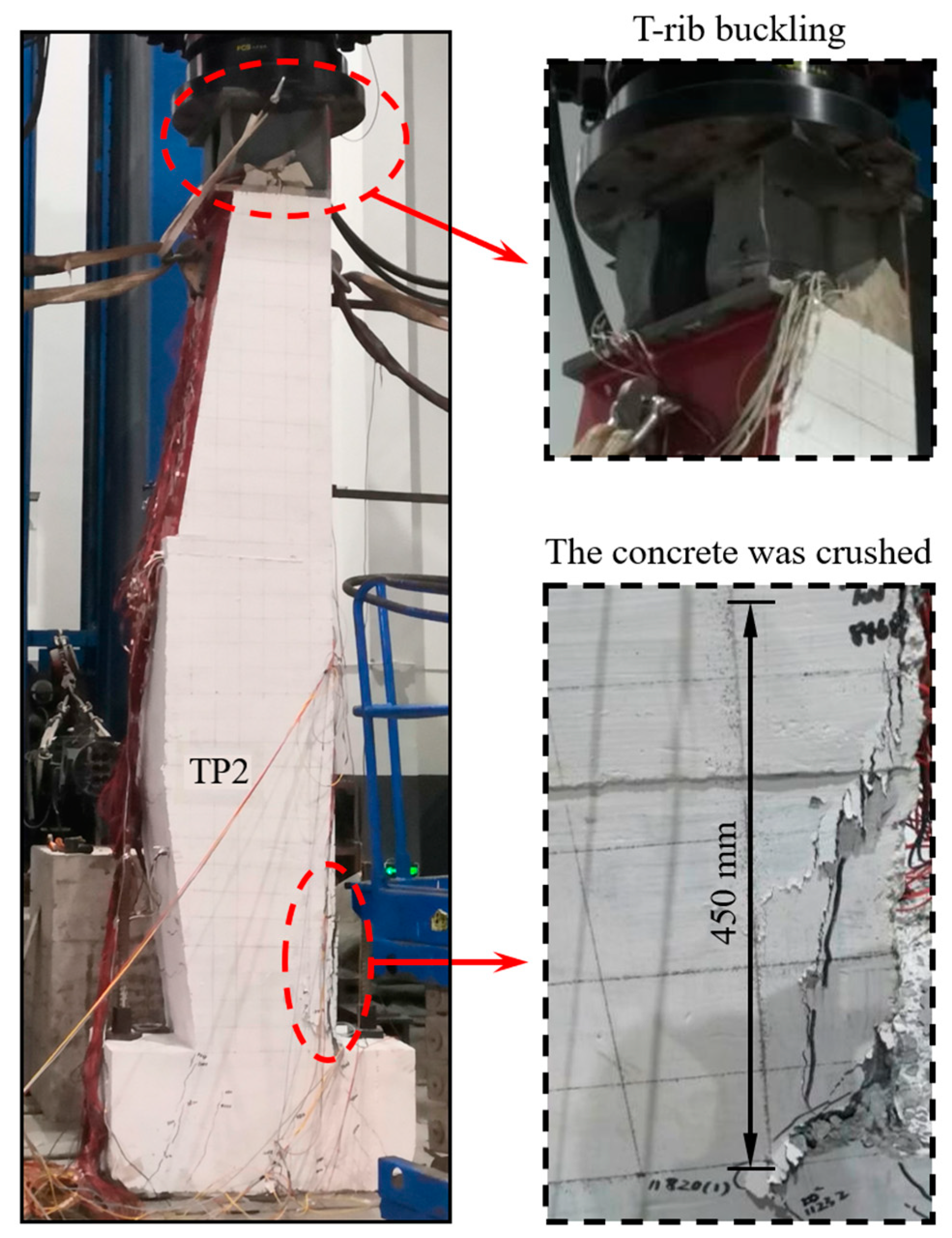
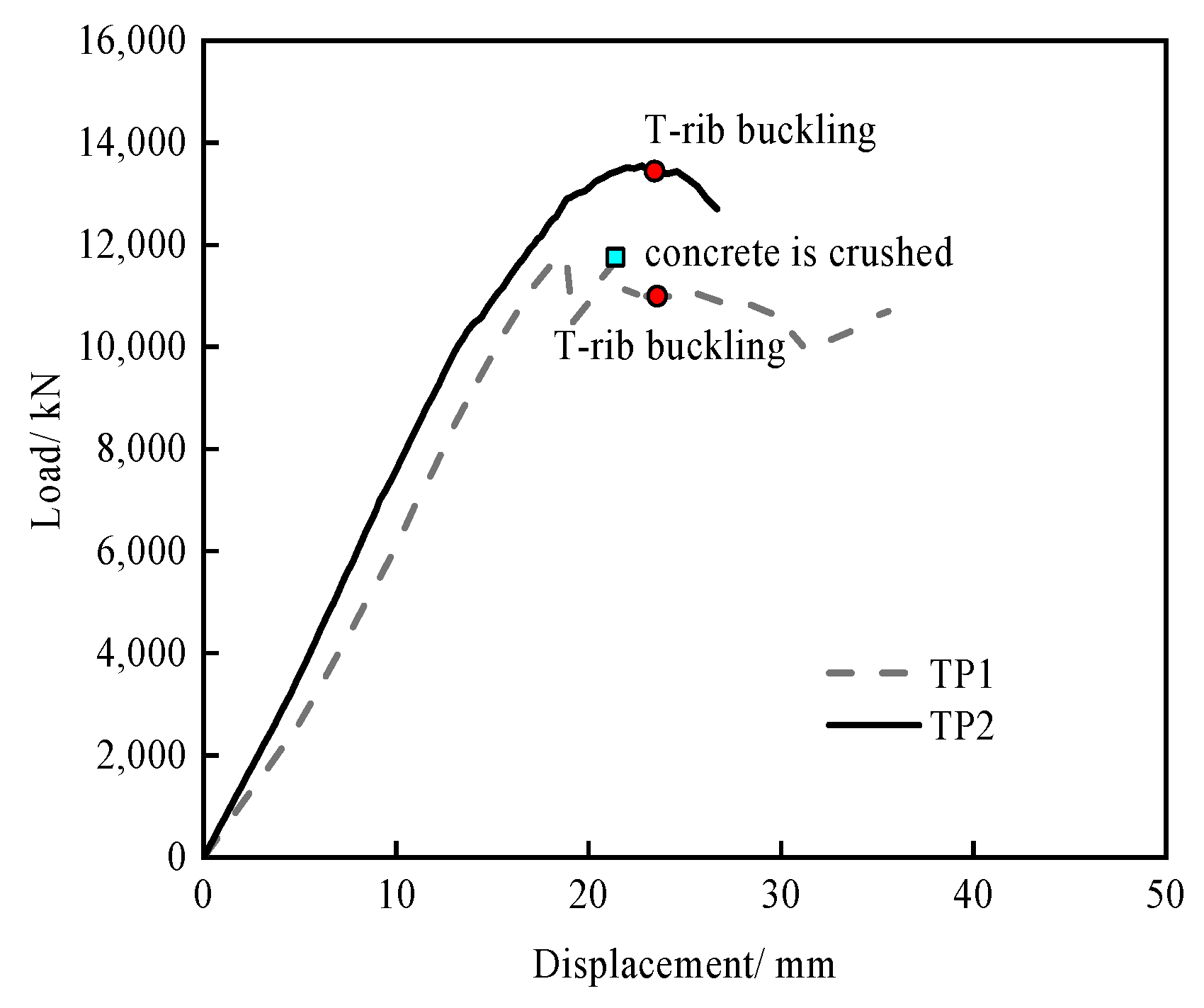

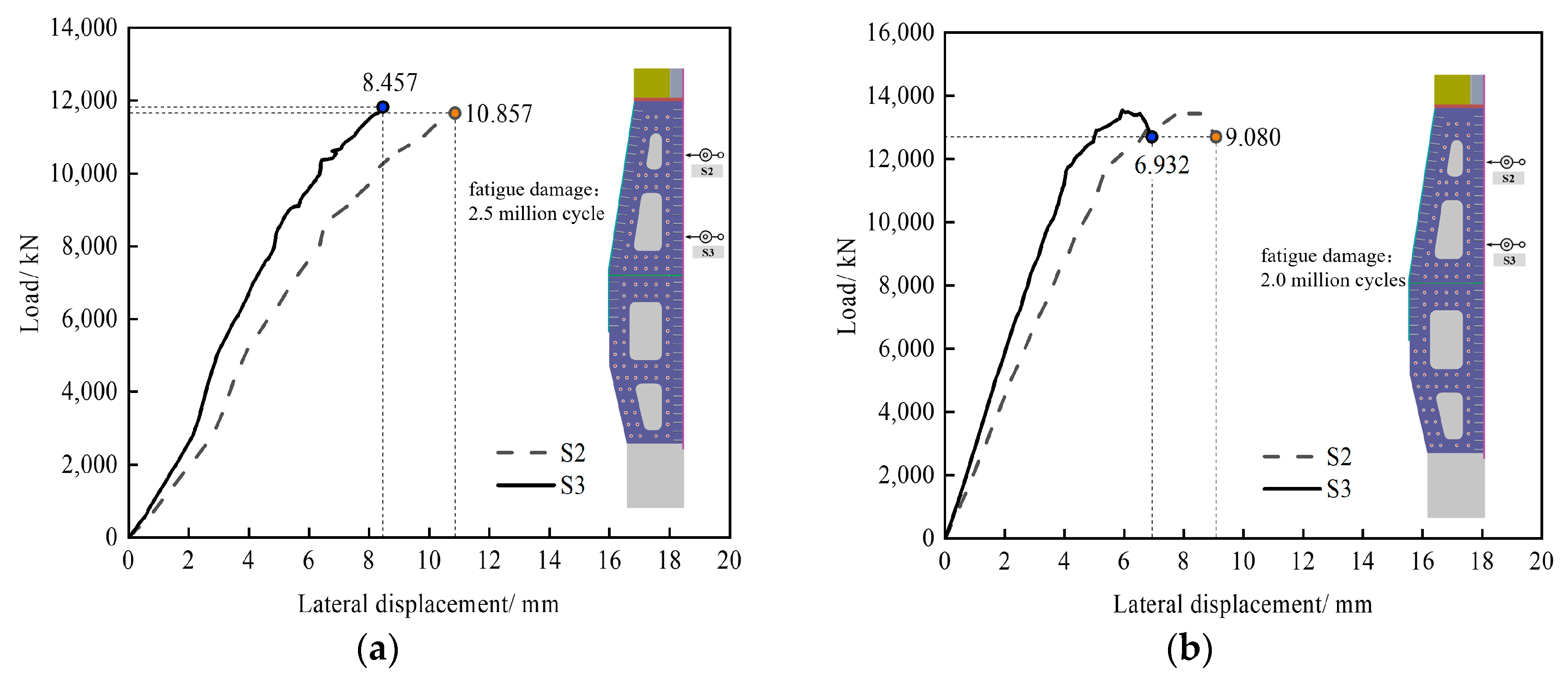
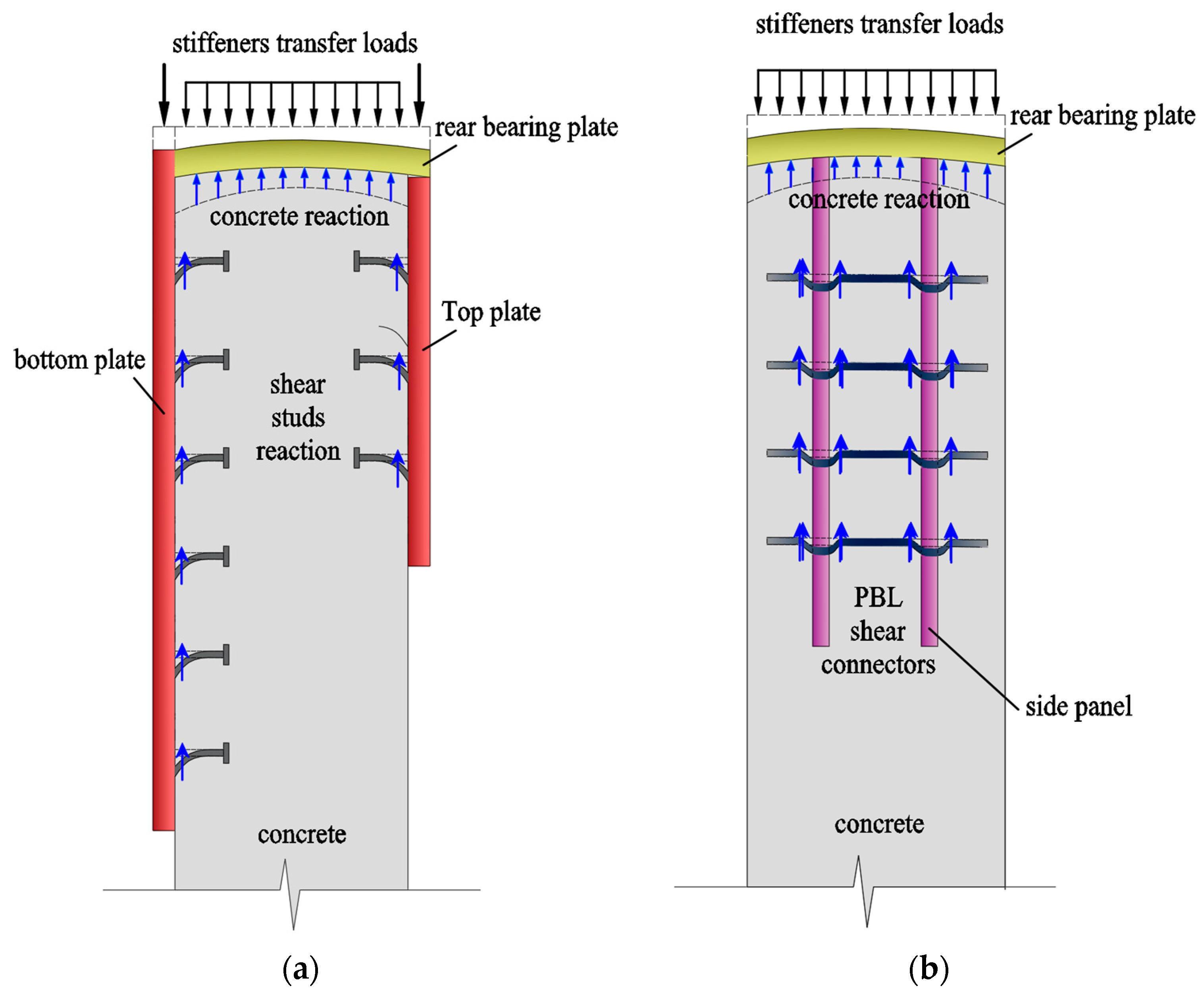

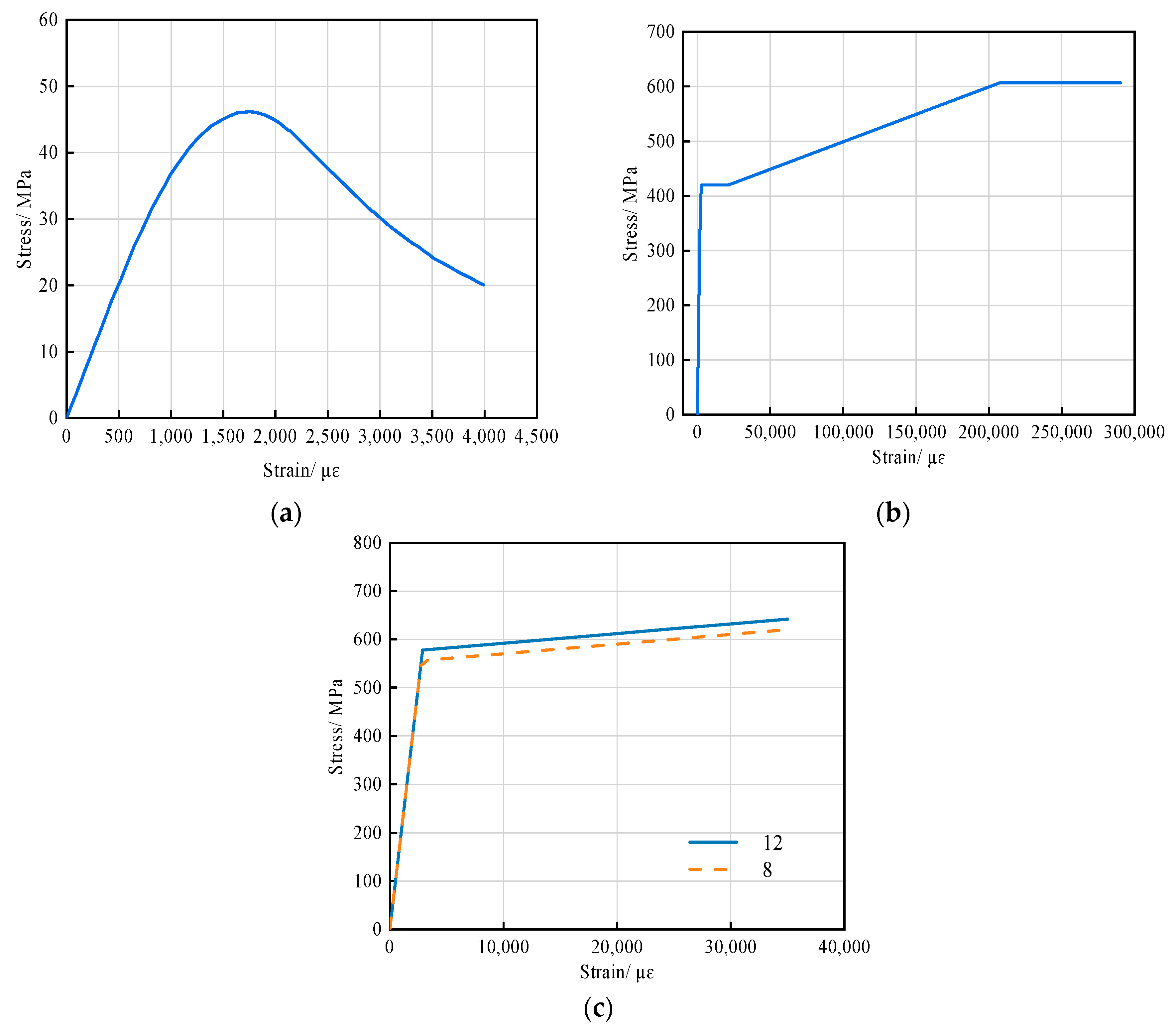
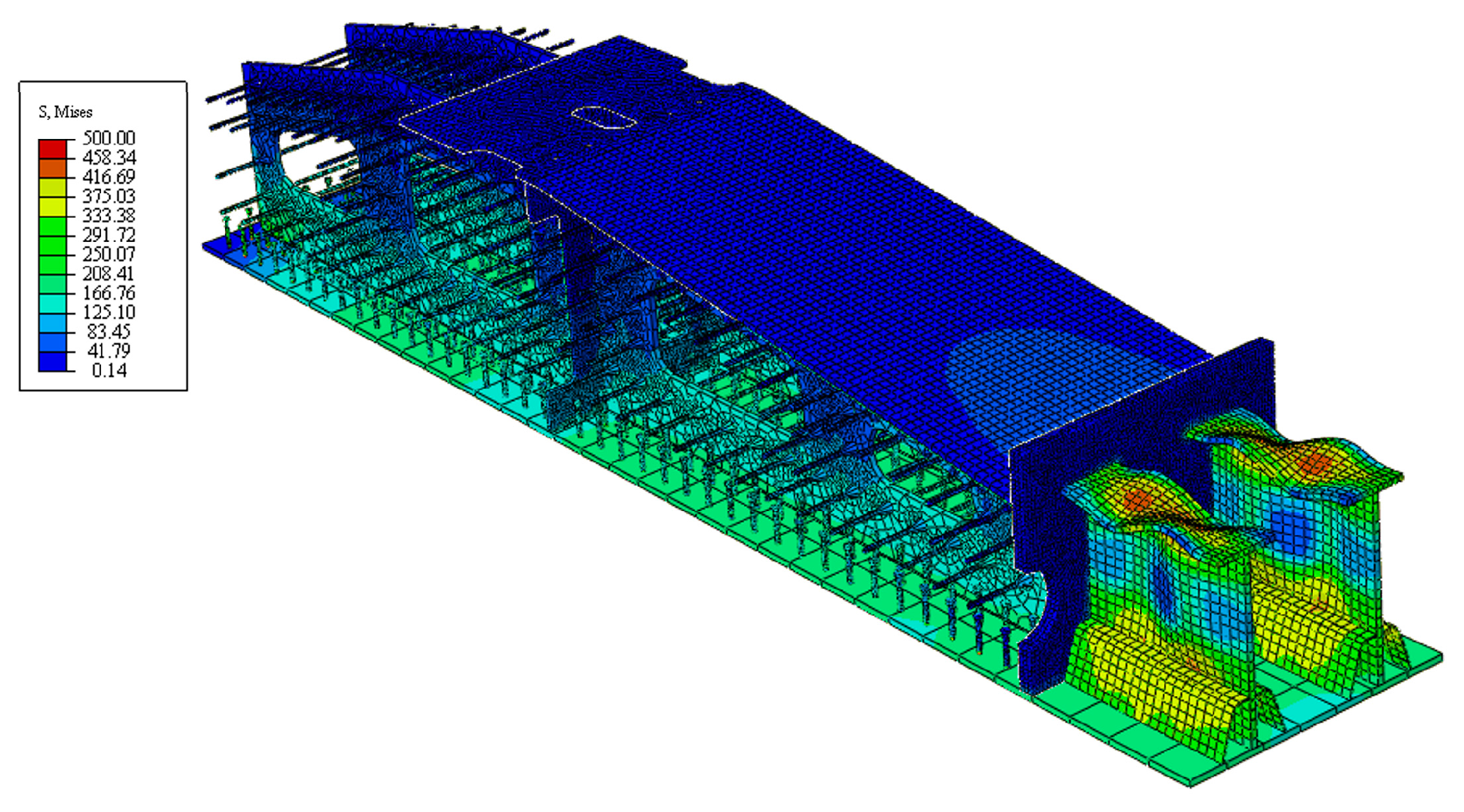
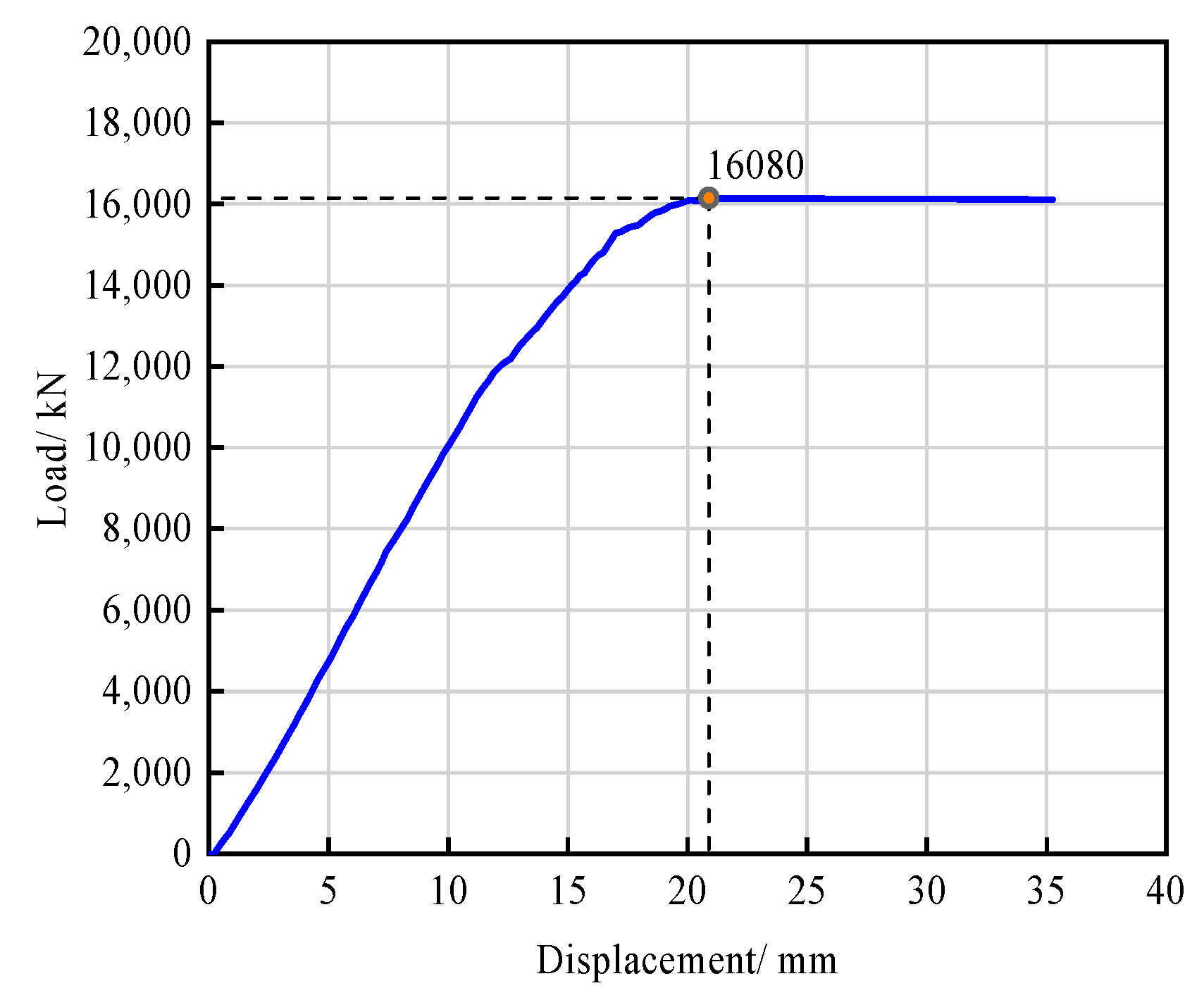
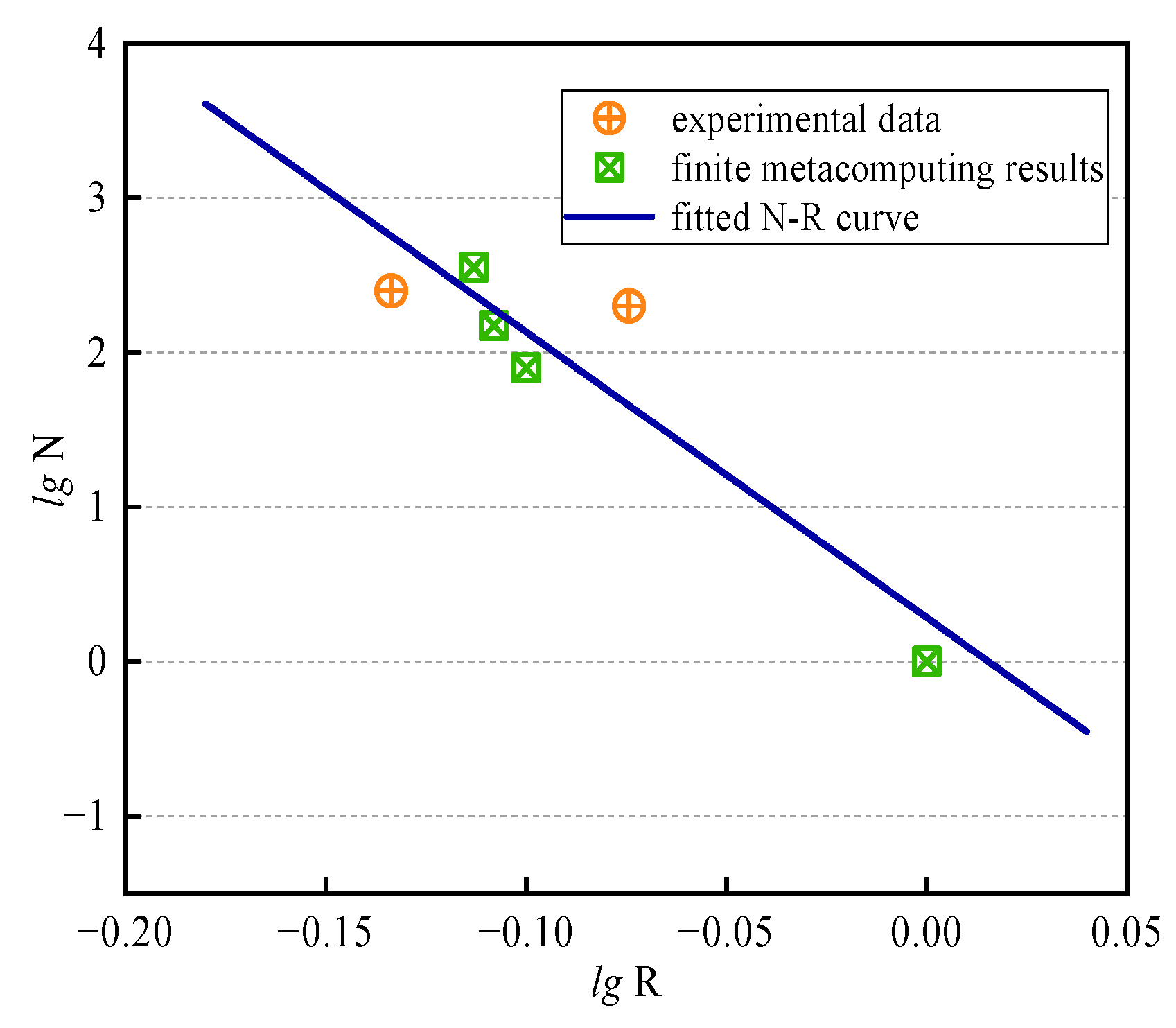


| Members | Material Types | Dimensions (/mm) | Elastic Modulus (/MPa) | Poisson’s Ratio |
|---|---|---|---|---|
| Concrete | C60 | - | 3.6 × 104 | 0.2 |
| Steel plates | Q345 | 12/16/32 (thickness) | 2.06 × 105 | 0.3 |
| Prestressed steel strands 1 | High-strength, low-relaxation | 15.2 (diameter) | 1.95 × 105 | 0.3 |
| PBL through bars | HRB400 | 12 | 2.06 × 105 | 0.3 |
| Shear studs | ML15 | 10 (diameter) | 2.06 × 105 | 0.3 |
| Operating Conditions | Axial Force (/kN) | Shear Force (/kN) | Bending Moment (/kN·m) | Torsional Moment (/kN·m) |
|---|---|---|---|---|
| Maximum positive bending moment | −5.61 × 104 | −5.71 × 102 | 7.49 × 104 | 3.63 × 102 |
| Maximum negative bending moment | −7.46 × 104 | −4.37 × 103 | −5.50 × 104 | −1.31 × 102 |
| Maximum axial force | −7.47 × 104 | −4.22 × 103 | −2.25 × 104 | −1.32 × 102 |
| Trial ID | Fatigue Damage Level (/104 Cycles) | Ultimate Load (/kN) | Failure Mode | Failure Characteristics |
|---|---|---|---|---|
| TP1 | 250 | 11,820 | Eccentric compression | Concrete exhibited penetrating cracks → concrete was crushed, stiffeners buckled |
| TP2 | 200 | 13,551 | Eccentric compression | Concrete exhibited penetrating cracks → concrete was crushed, stiffeners buckled |
| Component | Force Transmission Ratio | |
|---|---|---|
| Back pressure plate | 63.2% | |
| Shear studs | Bottom plate | 15.3% |
| Top plate | 5.3% | |
| PBL shear keys | Left side | 8.1% |
| Right side | 8.1% | |
| Calculation Formula | Reference | Ultimate Load Capacity | Relative Error |
|---|---|---|---|
| [36] | 148.7 | 0.936 | |
| [32] | 146.4 | 0.906 | |
| [33] | 59.8 | 0.221 | |
| [34] | 48.0 | 0.375 | |
| [37] | 66.8 | 0.130 | |
| - | 80.8 | 0.051 | |
| Finite element calculation results | - | 76.8 | - |
| Ultimate Load Capacity | Calculated Value (/kN) | Experimental Value (/kN) | Error (%) | |||
|---|---|---|---|---|---|---|
| Na | Nb | Nc | N | |||
| TP1 | 11,166.20 | 34,117.66 | 11,864.13 | 11,166.20 | 11,820 | 5.53 |
| TP2 | 12,901.48 | 39,118.04 | 13,874.82 | 12,901.48 | 13,551 | 4.79 |
| Finite element | 15,190.56 | 46,418.58 | 16,820.24 | 15,190.65 | 16,080 | 5.54 |
| Model | Rear Compression Plate | Shear Studs | PBL Shear Keys |
|---|---|---|---|
| Original model | 63.2% | 20.6% | 16.2% |
| Optimization model | 65.8% | 18.2% | 15.4% |
| Variation | 2.6% | 2.4% | 0.8% |
Disclaimer/Publisher’s Note: The statements, opinions and data contained in all publications are solely those of the individual author(s) and contributor(s) and not of MDPI and/or the editor(s). MDPI and/or the editor(s) disclaim responsibility for any injury to people or property resulting from any ideas, methods, instructions or products referred to in the content. |
© 2023 by the authors. Licensee MDPI, Basel, Switzerland. This article is an open access article distributed under the terms and conditions of the Creative Commons Attribution (CC BY) license (https://creativecommons.org/licenses/by/4.0/).
Share and Cite
Wang, H.; Wu, S. Influence of Fatigue Damage on Criticality Cell Ultimate Load Capacity of Steel–Concrete Composite Section. Buildings 2023, 13, 1254. https://doi.org/10.3390/buildings13051254
Wang H, Wu S. Influence of Fatigue Damage on Criticality Cell Ultimate Load Capacity of Steel–Concrete Composite Section. Buildings. 2023; 13(5):1254. https://doi.org/10.3390/buildings13051254
Chicago/Turabian StyleWang, Haibo, and Shasha Wu. 2023. "Influence of Fatigue Damage on Criticality Cell Ultimate Load Capacity of Steel–Concrete Composite Section" Buildings 13, no. 5: 1254. https://doi.org/10.3390/buildings13051254
APA StyleWang, H., & Wu, S. (2023). Influence of Fatigue Damage on Criticality Cell Ultimate Load Capacity of Steel–Concrete Composite Section. Buildings, 13(5), 1254. https://doi.org/10.3390/buildings13051254





